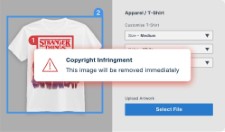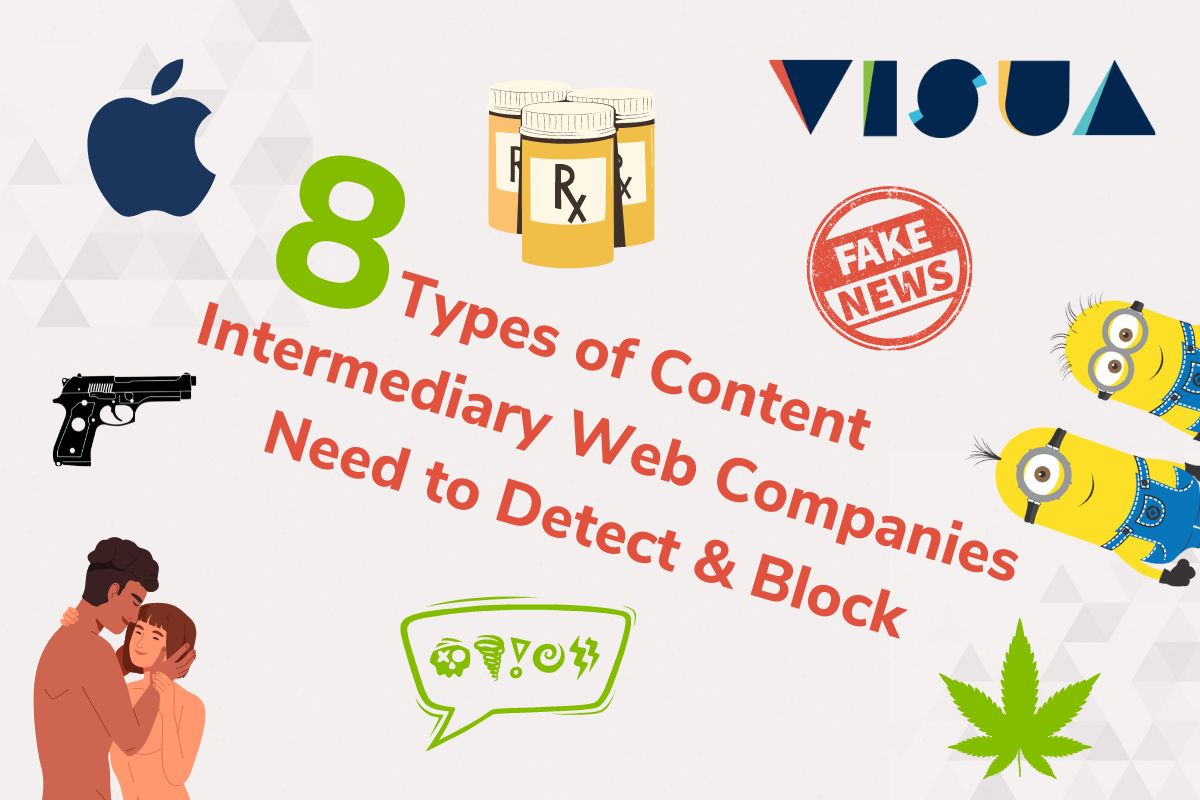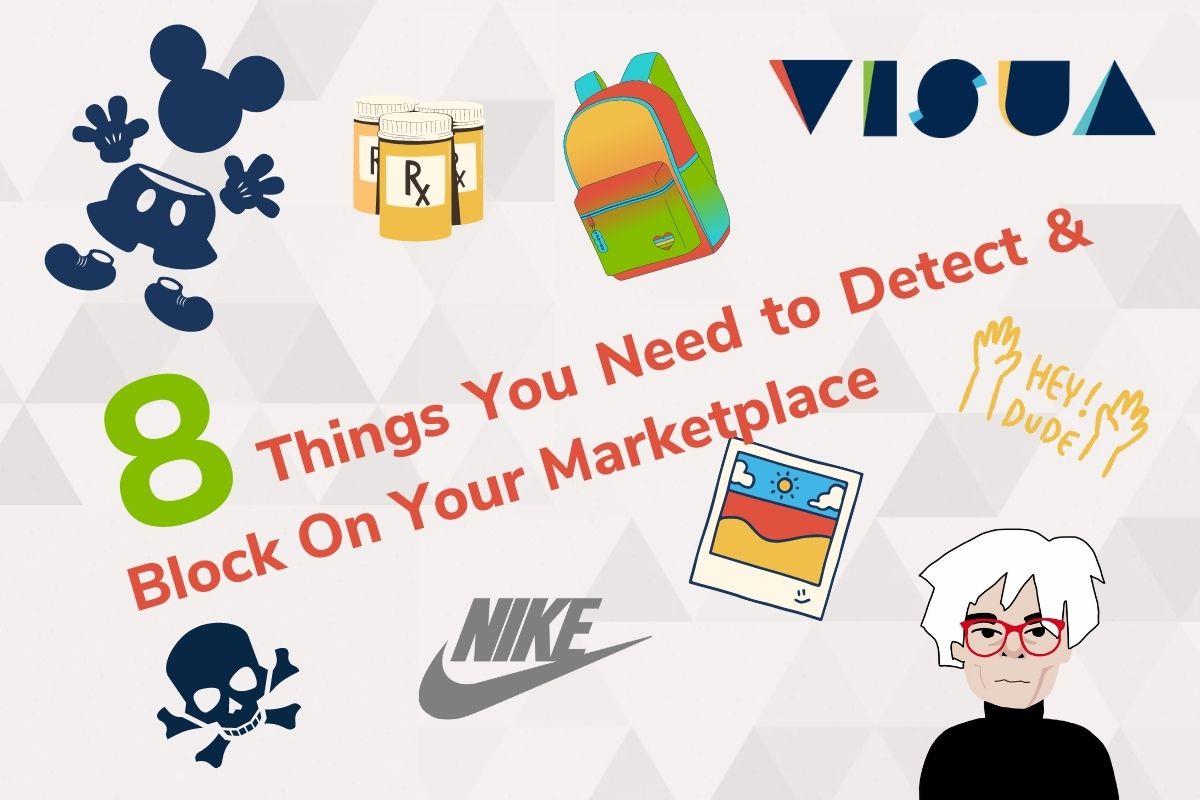Why are print-on-demand companies at high risk of copyright lawsuits?
VISUA’s research shows that many print-on-demand companies are not doing enough to protect themselves from potential lawsuits
Print-on-demand companies enable designers and businesses to sell merchandise without having to hold or manage their own inventory. Sellers upload their designs and the Print-on-demand company fulfils any orders that come in. Think along the lines of GearLaunch, Zazzle, Represent and Cafe Press, where you get a design that catches your eye printed on a raglan shirt, mug, notebook and even a medical mask.
Why are print-on-demand companies at risk?
The majority of, if not all, print-on-demand businesses issue sellers with terms and conditions that state that they, the seller, cannot upload designs that are protected by copyright or trademark. They also have compliance teams which monitor sellers’ output to ensure, as best they can, that these terms and conditions are being followed. However, it’s fair to say that humans cannot be expected to catch every infringement. The person trawling through uploads may not be familiar with a particular protected design or the volume may simply be too large. So, members of the compliance team may simply not be able to manually examine each design to determine if it infringes, and that is not the fault of an individual. It’s a systemic problem.
The terms and conditions sellers have to agree to are not enough to cover the print-on-demand company when it comes to lawsuits. Lawyers go after the final producer and not the creator. You could go so far as to say that the terms and conditions, if not managed by other efforts, looks like an attempt to pass the book on to the independent creative.
Thus, many print-on-demand companies are, in a sense, ignoring copyright and trademark laws and adding a significant risk burden of lawsuits by not employing other methodologies beyond a Ts & Cs agreement.
We wanted to gain an understanding of just how widespread an issue this was and so conducted a research exercise to find out. We discovered that 70% of companies offering these types of services allow copyright and trademark protected imagery to be printed and have no meaningful way to stop it.
“Through implementing this investigation,” begins Declan McGonigle, VISUA’s VP of Sales and Marketing, “we were able to identify a clear gap in copyright compliance around the print-on-demand sector. Interestingly, 90% of the companies approached had some sort of legal text for customers to accept upon upload or order confirmation.” So, the companies are aware of the legal consequences, but they are not doing enough to activate their policies.
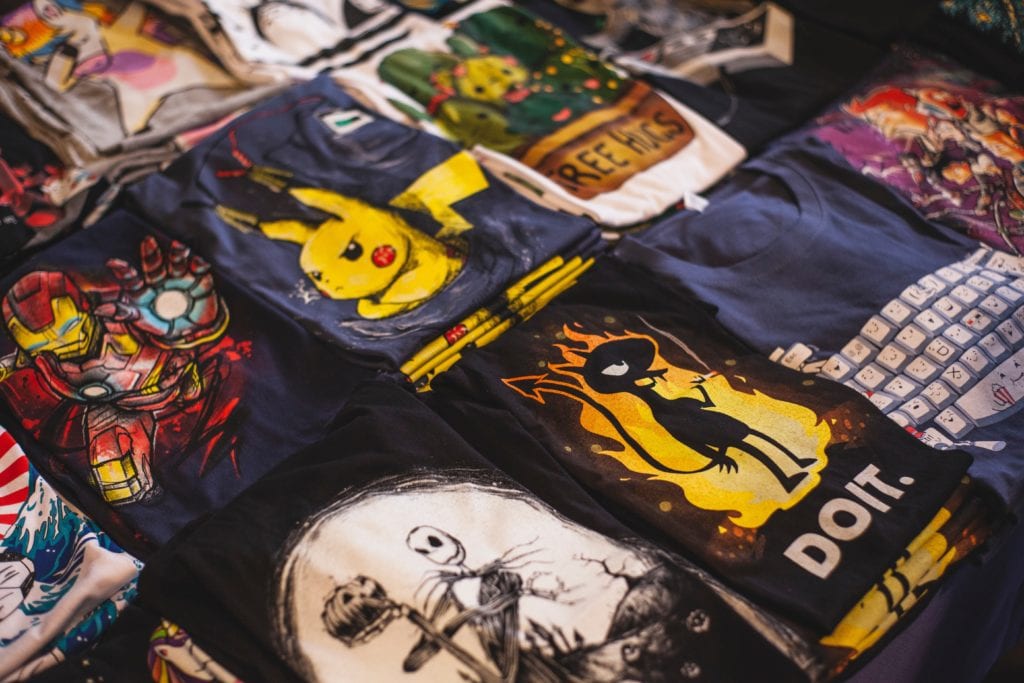
What does this mean?
While these websites are widely marketed as places where independent designers can make money from their passion, the truth of the matter is, thousands upon thousands of items on these websites are in breach of copyright laws. Often the emphasis on the independent designers can distract from what many legal professionals believe to be the truth: “The marketing lingo distracts” reads an article on the website, “from what some rights holders and intellectual property lawyers believe is a cornerstone of the business model: counterfeit sales.”
In other words, the legal teams responsible for pursuing these cases believe that selling items with a protected logo or image on them is akin to selling counterfeit goods. If 70% of these companies are not doing enough to stop this, they are being non-compliant with the decade’s old-digital copyright law and opening themselves up to lawsuits. Perhaps even from some of the world’s best-loved brands.
For example, in 2018, a judge awarded motorcycle brand Harley-Davidson $19.2 million following a federal lawsuit against Print-on-Demand website Sunfrog. US District Judge J.P Stradtmueller stated that Sunfrog did not do enough to police its website and ensure that sellers were not infringing copyright laws. Cases like this can be found in every corner of the internet, where print-on-demand companies are paying out hundreds of thousands, and in many cases millions of dollars because they were not doing enough.
Some people may argue that companies like this make most of their profits through the sale of copyright-infringed imagery created by third-party designers and so it would be detrimental to remove such imagery. However, it’s clear to see that the cost of not doing enough to activate anti-infringement policies is greater. Companies are at risk of enormous financial loss in legal costs and payouts. Implementing something that stops the uploading of protected designs will not only save the company money and protect their reputation but also their revenues can exceed those generated by stolen imagery.
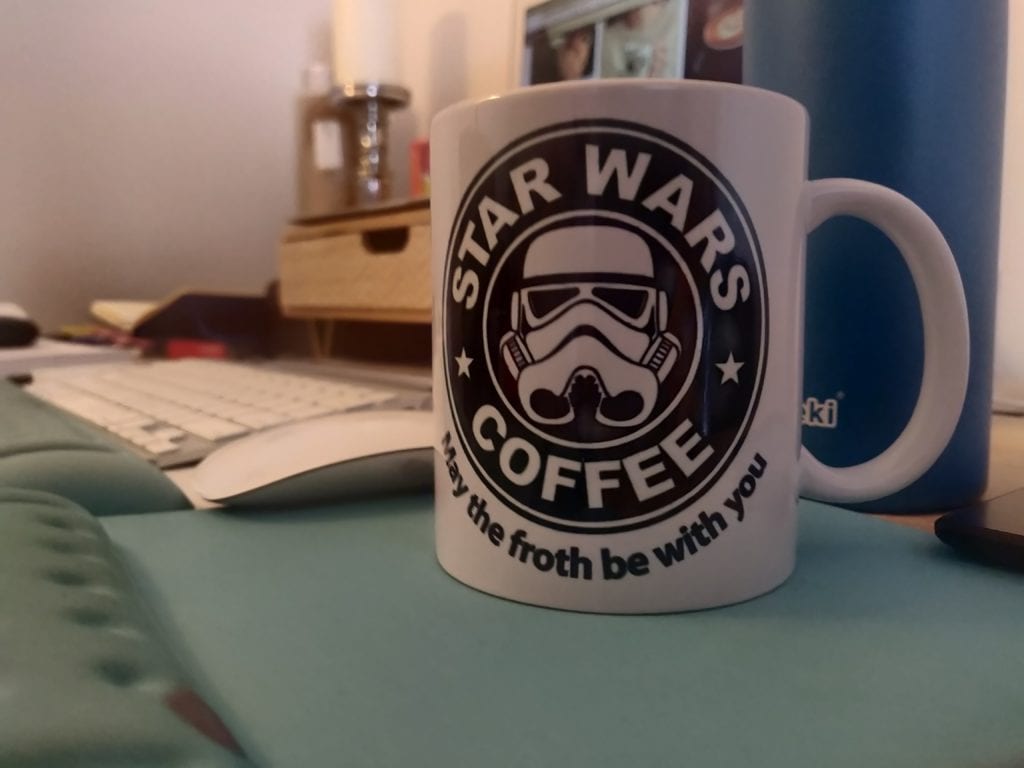
How VISUA helped GearLaunch manage the risk
GearLaunch is a platform that allows designers to operate pages under their own domain names and integrate with Shopify, while the company provides the marketing, inventory tools, production, delivery and customer service. They prioritise the prevention of trademark and copyright infringement and even blog about it. It was with the help of VISUA that GearLaunch were able to effectively manage the risk of copyright infringement, therefore eliminating potential lawsuits, bolstering their reputation and ultimately increasing their profits.
Like other print-on-demand companies, GearLaunch was challenged with reducing the risk of litigation caused by sellers illegally using protected content. While their Trust & Safety team worked hard to manage the process, there was only so much they could do. They realized that the company was vulnerable to lawsuits and that the cost of this could put their business in jeopardy.
VISUA’s Computer Vision for logo detection technology gave them an advanced platform from which to manage the problem. Combined brand detection and image matching, tailored to their specific needs, enabled them to overcome the challenges they were faced with. Lawsuits were eliminated, revenues increased, DMCA notices are now handled with ease and they have upheld their reputation as a company that takes copyright and trademark laws seriously.
So, in conclusion, it is entirely possible for print-on-demand companies to take action to prevent users and sellers from breaching copyright laws and landing them in hot water. What’s required is not more man-hours, but visual technology that can help compliance teams to effectively monitor and manage potential infringements. Ultimately, this will reduce legal liability and costs and it will prevent this type of business from being seen as an enemy among global brands, artists and legal teams the world over. In short: it simply makes good business sense.
To learn more about how GearLaunch and VISUA work together to eliminate lawsuits for the print-and-demand companies, click below.
Book A DemoRELATED
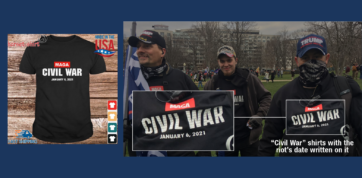 Capitol Hill Camp Auschwitz Shirts – A Cautionary Tale Posted in: Brand Protection - Reading Time: 5 minutesHeader image credit: Tess Owens/Vice News Could the “Camp Auschwitz” shirts have been prevented? At this point, you will have at least […]
Capitol Hill Camp Auschwitz Shirts – A Cautionary Tale Posted in: Brand Protection - Reading Time: 5 minutesHeader image credit: Tess Owens/Vice News Could the “Camp Auschwitz” shirts have been prevented? At this point, you will have at least […] It’s Amazing What’s Possible With Visual-AI For Trademark & Copyright Protection Posted in: Brand Protection, Counterfeit Detection, Featured, Media Library Management, Trademark Protection - Reading Time: 2 minutesYour Trademark & Copyright Protection Solution Powered By Best-In-Class Enterprise Visual-AI Protecting your brand and products is not only key for established […]
It’s Amazing What’s Possible With Visual-AI For Trademark & Copyright Protection Posted in: Brand Protection, Counterfeit Detection, Featured, Media Library Management, Trademark Protection - Reading Time: 2 minutesYour Trademark & Copyright Protection Solution Powered By Best-In-Class Enterprise Visual-AI Protecting your brand and products is not only key for established […] The Benefits of Visual-AI in Brand Protection Posted in: Brand Protection - Reading Time: 4 minutesThe 5 Brand Protection benefits of using Visual-AI It’s been said for a number of years that Visual-AI is changing the game […]
The Benefits of Visual-AI in Brand Protection Posted in: Brand Protection - Reading Time: 4 minutesThe 5 Brand Protection benefits of using Visual-AI It’s been said for a number of years that Visual-AI is changing the game […]
VISUA & Vision Insights Partner To Usher In New Era In Sports Sponsorship Intelligence
Reading Time: 4 minutesExclusive partnership sees Vision Insights integrate VISUA’s Sports Sponsorship Monitoring Computer Vision Suite into its new Decoder…
Featured Sponsorship Monitoring Technology VISUA NewsEight Types of Content Intermediary Web Companies Need to Detect & Block to be Compliant with the European Digital Services Act
Reading Time: 7 minutesThe European Digital Services Act is a groundbreaking piece of legislation that aims to modernise the regulation…
Brand Protection Content Moderation Counterfeit Detection Trademark ProtectionEight Types of Content that Marketplaces & Ecommerce Sites Need to Block to be Compliant with the European Digital Services Act
Reading Time: 6 minutesThe European Digital Services Act is new legislation which aims to modernise the regulation of online businesses…
Brand Protection Content Moderation Counterfeit Detection Trademark Protection

